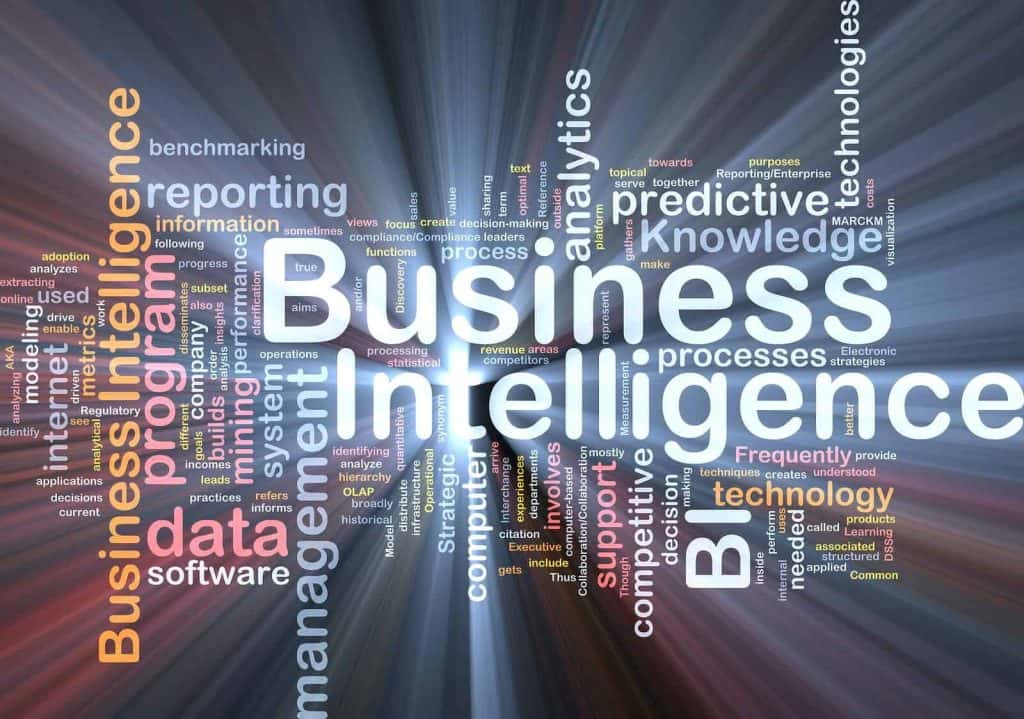An Introduction to Business Intelligence Platforms
As modern business has embraced digital transformation, the volume of data sources available for exploration has grown exponentially. The term ‘business intelligence’ (BI) has become synonymous with strategic growth and data-driven operational decision-making.
Table of Contents
ToggleA business intelligence software is unlike other tools because it is the key to making data-based decisions. Business Intelligence solutions have improved decision-making at all levels of business management. With the ability to analyze data from multiple sources, these platforms have become indispensable in the quest for maintaining a competitive edge.
At their core, a business intelligence tool exists to make sense of the vast amounts of raw data generated by businesses and provide insights that can be harvested to drive efficiency and growth.
The rise of business intelligence tools has reshaped how companies approach data analysis. These tools offer more than just a way to organize and present data; they enable businesses to delve deep into their operational intricacies, identifying areas of improvement, potential growth, and hidden risks. Business intelligence software solutions have evolved from simple data repositories to sophisticated systems capable of predictive analytics and complex data mining.
In this deep dive into the world of business intelligence software, this article will chart their evolution, highlight core features, and the major impact they have on businesses. We will discuss key features to consider when choosing the right BI platform for you and the future trends in this rapidly evolving technology.

The Evolution of Business Intelligence
The growth of business intelligence tools has included many significant advancements and innovations. From the early days of simple spreadsheet tools, business intelligence has evolved into a complex field encompassing data mining, predictive analytics, and real-time data analysis.
The development of BI software has been driven by decision-makers demanding a more sophisticated analytics platform that can handle the ever-increasing volume of the company’s data.
In the past, a business intelligence platform was primarily used by large corporations with substantial IT resources who had to undergo a significant learning curve to build custom reports. However, the advent of cloud-based BI tools has democratized access to advanced analytics, enabling small and medium-sized businesses and departmental users to leverage these powerful platforms.
The evolution of BI platforms is not just about technology, it is also a story of how data analysis has become a critical component of how business strategy is executed across industries.
Core Features of Business Intelligence Platform
The best business intelligence tools allow users to perform exploratory data analysis and allow data visualization to uncover data insights using data discovery to support operational decision-making. Key features include:
Data Visualization Tools
Tools that visualize data make it more understandable and consumable. Dynamic dashboards, charts, and graphs allow business leaders to grasp complex data sets quickly.
Data Integration Capabilities
A Business Intelligence platform can turn raw data from various data sources, including SQL database systems, transaction systems, and social media feeds, to create a cohesive view of the business landscape for online analytical processing. They can merge data and catalog its source to build trust in the data.
Predictive Analytics
An advanced business intelligence tool will apply predictive models and use historical data to help forecast future trends and behaviors, aiding in proactive decision-making.
Natural Language Processing (NLP)
This feature allows users to use natural language to interact with the Business Intelligence solutions, making business analytics more accessible to non-technical users.
Mobile Accessibility
With the rise of mobile technology, a Business Intelligence tool can offer mobile apps or responsive web designs, enabling users to access data and insights on the go.
These core features demonstrate the versatility and power of business intelligence platforms, making them an essential tool for any data-driven organization.

The Role of Data Analytics in BI Platforms
Data analysis is the heart of every business intelligence platform. It involves the systematic examination of multiple data sources to uncover patterns, trends, and insights. The process ranges from basic data aggregation and summarization to more complex data mining and exploratory analysis.
Using a Business intelligence tool can improve data management by automating and streamlining the ETL process. They enable data analysts and engineers to easily perform exploratory analysis, uncovering insights that would be difficult to detect manually. This automated data preparation is particularly valuable in handling large and complex datasets where manual analysis would be impractical or impossible.
The role of a business intelligence tool extends beyond mere number crunching. It involves interpreting the data to provide business leaders with the information they need to make informed decisions.
Whether it’s understanding customer behavior, identifying market changes, or evaluating the performance of a new product, BI platforms provide the analytical horsepower to turn data into meaningful insights.
How Business Intelligence Tools Transform Raw Data into Actionable Insights
The transformation of raw data into useful insights is a critical capability of business intelligence tools. This process involves several stages, including data collection, cleaning, transformation, integration, analysis, and visualization.
A Business Intelligence platform can automate much of this process, reducing the time and effort required to derive meaningful insights from data. When coupled with data integration tools they add a further level of capability.
One of the key strengths of BI tools is their ability to handle data from multiple data sources. This capability allows businesses to create a more holistic view of their operations, combining data from internal systems like enterprise resource planning (ERP) and customer relationship management (CRM) with external data sources like market research, Google Analytics, and social media stream analytics.
The insights provided by BI tools can range from operational improvements, such as tuning search rankings using Google Analytics, to strategic insights, such as detecting emerging market trends and threats.
These insights are not just informative; they are actionable, providing businesses with clear guidance on the steps they need to take to improve performance and achieve their objectives.

Data Visualisation in Business Intelligence
Data visualization has emerged as a vital component in Business Intelligence (BI), significantly enhancing the interpretability and usability of complex data sets. This section delves into the critical role of data visualization in providing insights and supporting business decision-making using BI systems.
This trend is propelled by the advent of interactive technologies, such as AI-based alarms and real-time data visualization. These innovations allow for the immediate understanding and interaction with data, transforming how businesses perceive and respond to changing information. AI-powered visualizations can highlight trends, detect anomalies, and predict future patterns, making the data not just visible but insightful.
The evolution of data visualization in BI has led to the development of sophisticated dashboards and graphical tools.
These platforms present data in easily digestible formats, enabling stakeholders at all levels to quickly understand complex information and make better decisions.
Interactive elements like drill-downs and dynamic charts allow users to explore data under the covers, to gain a more comprehensive understanding of underlying trends and relationships.
Data visualization in BI transcends traditional reporting. It offers a powerful means to communicate complex data stories clearly and compellingly, ensuring that organizations can leverage their data assets to make confident, data-driven decisions effectively.

Business Intelligence Software: Integrating Data Management
Business intelligence software has revolutionized the way businesses manage and use their data. BI software solutions provide a centralized platform for data storage, analysis, and reporting, making it easier for businesses to maintain a consistent and accurate view of their data.
A key feature of BI software is its data management capabilities. This includes functions like data quality control, data integration, and data governance, which ensure that the data used for analysis is accurate, complete, and secure. These features are either built into the BI software or integrated into external data management solutions.
Good data management is critical for effective business data analysis, as even the most advanced analytics tools cannot compensate for poor-quality data.
Another important aspect of business intelligence software is its ability to facilitate data sharing and collaboration. These platforms often include features for sharing reports and dashboards, enabling teams to work together more effectively and make collective decisions based on shared data-driven insights.

Data Security in Business Intelligence: Navigating Cyber Threats and Instability
Data security in Business Intelligence (BI) is a critical requirement driven by the increasing prevalence of cyber threats and sensitive data regulation. As BI platforms accumulate sensitive data, protecting this information is essential to maintain trust and operational integrity.
The rise of sophisticated cyber-attacks, such as ransomware and phishing, has necessitated the implementation of robust security provisions in BI systems.
This trend towards heightened data security involves multiple layers of protection. Advanced encryption techniques safeguard data both at rest and in transit, ensuring that sensitive information remains confidential.
Role-based access controls are critical, limiting data accessibility to authorized personnel, thus reducing the risk of internal breaches. Regular security audits and compliance checks help BI platforms align with international data protection laws, a necessity in a global business environment.
Real-time monitoring and threat detection systems can identify and respond to potential security breaches swiftly. These systems are designed to detect anomalies in data access or usage, enabling immediate action to mitigate any potential damage.
Different nations and states may implement local data security regulations. This requires BI platforms to be adaptable and compliant with varying local laws, ensuring data sovereignty and reducing the risk of cross-border data transfer issues.

The Impact of Business Intelligence on Decision-Making
Business intelligence plays an important role in business decision-making. BI tools are analytics platforms that do more than summarize data. The best business intelligence software provides business leaders with the data discovery and the ability to identify trends and insights they need to make confident decisions, reducing reliance on intuition and guesswork.
This data-driven approach to decision-making can lead to better outcomes, with benefits such as increased efficiency, higher profitability, or improved customer satisfaction.
Business intelligence platforms can enable businesses to respond more quickly to changing market conditions. With real-time analytics and reporting, companies can detect shifts in customer preferences, economic trends, or competitive dynamics and adjust their strategies accordingly.
The strategic value of business intelligence lies in its ability to transform data into a competitive advantage. By leveraging the insights gained from BI platforms, businesses can identify new opportunities, optimize their operations, and outmaneuver competitors.

AI-Driven Transformation in Business Intelligence Platforms Amid Global Changes
Integrating Artificial Intelligence (AI) into Business Intelligence (BI) platforms is more than just a technological upgrade. Ai adds a new level of insight. This section examines the deep synergy between AI and BI platforms, emphasizing their combined role in navigating and capitalizing on today’s business complexities.
Advanced AI capabilities like predictive analytics and natural language processing transform these analytics platforms from traditional data visualization tools into dynamic systems that not only process vast data sets but also derive proactive, forward-thinking insights.
This shift is crucial for businesses grappling with rapidly fluctuating market conditions, changing consumer preferences, and increasingly complex global supply chains.
For instance, AI-enhanced BI platforms can analyze patterns in consumer behavior, predict market trends, and even anticipate supply chain disruptions before they occur. This predictive capacity allows businesses to move from reactive to proactive strategies, ensuring they are not just keeping pace, but anticipating disruptions and opportunities.
Moreover, AI-driven insights foster agility and innovation within organizations. They empower decision-makers with a deeper, more nuanced understanding of their operational environment.
This intelligence is not limited to high-level strategic decisions but permeates through various organizational layers, influencing everything from daily operations to long-term planning.
In today’s interconnected business landscape, where agility and resilience are valuable attributes, AI-enhanced BI platforms become pivotal attributes that drive innovation, anticipate future challenges, and provide the insights necessary for sustainable growth and competitiveness.
Embracing AI in BI platforms allows businesses to be better equipped to navigate the uncertainties of a rapidly changing world, making informed decisions that capitalize on emerging opportunities and mitigate potential risks.

Top Business Intelligence Platforms
In this section, we explore the top 10 business intelligence platforms currently dominating the market. Each platform is evaluated based on its unique features, vendor, typical usage scenarios, and pricing models.
This concise overview aims to provide a snapshot of the diverse capabilities and offerings available in the BI industry, catering to the varying needs of businesses seeking to embrace deeper data-driven decision-making.
1. Tableau
Vendor: Salesforce
Typical Usages: Data visualization and analysis for team collaboration.
Key Features: Customizable data visualizations, drag-and-drop functionality, large data set handling.
Pricing: Creator at $75/month per user, Explorer at $42/month per user, Viewer at $15/month per user.
2. Microsoft Power BI
Vendor: Microsoft
Typical Usages: Microsoft power BI provides data analytics and visualization for multiple data warehouses.
Key Features: Built-in AI, integration with Microsoft Power BI suite, robust security, and free training resources.
Pricing: Free for the basic version, Power BI Pro at $10/month per user, and Microsoft Power BI Premium at $20/month per user.
3. Zoho Analytics
Vendor: Zoho
Typical Usages: Data analytics and the ability to generate reports for businesses and solopreneurs.
Key Features: Extensive integrations, self-service data preparation, machine learning tools, embeddable analytics.
Pricing: Basic at $24/month, Standard at $48/month, Premium at $115/month, Enterprise at $455/month, Custom pricing available.
4. Oracle Business Intelligence
Vendor: Oracle
Typical Usages: Centralized data management and BI services.
Key Features: Web-based application integration, Oracle Analytics Cloud, Oracle BI Answers, BI Delivers feature, Publisher tool.
Pricing: Contact sales for pricing.
5. Qlik Sense
Vendor: Qlik
Typical Usages: AI-powered insights and reporting for business users.
Key Features: SAP Connectors, Data Warehouse Automation, alerting and action automations, hybrid cloud interface.
Pricing: Standard at $20/month per user, Premium at $2,700/month, Enterprise pricing on request.
6. Yellowfin BI
Vendor: Yellowfin
Typical Usages: Data visualization and analytics.
Key Features: Embedded operational workflows, AI insights, drag-and-drop data visualizations, and various report builders.
Pricing: Custom pricing available.
7. SAP BusinessObjects Business Intelligence
Vendor: SAP
Typical Usages: Scalable data insights management for businesses of all sizes.
Key Features: Real-time data, advanced reporting, self-service BI, visualization tools, and sharing permissions. Available on prem and as an SAP analytics cloud.
Pricing: Custom pricing.
8. Dundas BI
Vendor: Insight software
Typical Usages: Advanced analytics and data visualization.
Key Features: Data connectivity and integration, interactive visualization tools, user-friendly interface, flexible data warehousing.
Pricing: Contact for pricing.
9. Datapine
Vendor: Datapine
Typical Usages: Comprehensive data analytics and reporting.
Key Features: Intuitive drag-and-drop interface, predictive analytics, interactive dashboard features, and multiple reporting options.
Pricing: Starting from $249/month for one user, a free 14-day trial available.
10. Sisense
Vendor: Sisense
Typical Usages: Data analytics with a focus on developers.
Key Features: Interactive data visualization, AI-generated insights, data connectors, and customizable solutions.
Pricing: Customized solutions, contact for pricing.
Each of these platforms offers unique features and capabilities, catering to different business sizes and requirements, from small enterprises to large corporations. The pricing varies across platforms, with some offering custom pricing options to fit specific business needs.
Choosing the Right Business Intelligence Platform
Choosing the best business intelligence software is a critical decision for any business. The ideal BI platform should align with the company’s specific needs, data infrastructure, and strategic goals. Here are some key factors to consider when selecting a BI platform:
Data Compatibility
The platform should be able to integrate seamlessly with the company’s existing data sources and systems.
User-Friendly Interface
A user-friendly interface, possibly with a drag-and-drop interface, is important to ensure that non-technical users can easily navigate and use the platform.
Scalability
The BI software should be scalable to accommodate the company’s growth and evolving analytics requirements.
Security and Compliance
Business intelligence tools must have robust security features and comply with relevant data protection regulations.
Support and Training
Adequate support and training resources are essential to help users get the most out of the BI platform.
By evaluating BI solutions based on the factors that matter most to them, businesses can select ther best business intelligence software that meets their current and longer-term objectives.

Upcoming Trends in Business Intelligence Technology
The field of business intelligence (BI) software is continually evolving, with new trends and technologies emerging regularly. Some of the key trends to watch in the future include:
Artificial Intelligence and Machine Learning
AI and ML are increasingly being integrated into BI platforms, enhancing their analytical capabilities, improving usability, and enabling more sophisticated exploratory analysis.
Augmented Analytics
Augmented Analytics leverages AI to automate data preparation and analysis, simplifying data understanding for business users. This approach enhances data accessibility and interpretation, allowing users to gain insights quickly without deep technical expertise. It represents a shift towards more intuitive, AI-driven analytics in BI.
Natural Language Processing
Natural Language Processing (NLP) in Business Intelligence tools enables user-friendly interactions through natural language queries and commands, making data analy more accessible and intuitive.
Cloud-based BI Solutions
Cloud-based BI platforms are increasingly popular for their scalability, flexibility, and reduced upfront costs. They facilitate remote access, easy data integration, and offer a cost-effective, pay-as-you-go model, ideal for diverse business environments.

Data Privacy and Governance
As data privacy becomes a more pressing concern, BI platforms will need to incorporate more robust data governance and privacy features.
These trends indicate that the future of business intelligence will be characterized by greater automation, enhanced analytical capabilities, and a stronger focus on data privacy and governance.
The Strategic Value of BI Platforms
Business intelligence platforms have become an essential tool for businesses looking to identify trends and harness the power of data in their decision-making processes.
By providing comprehensive data analysis, actionable insights, and data-driven decision support, BI platforms offer a strategic advantage in an increasingly competitive and data-driven business environment.
The key to unlocking the full potential of a business intelligence platform lies in choosing the right solution, implementing effective data management practices, and fostering a culture of data literacy within the organization.
As BI technology continues to evolve, businesses that embrace these platforms and integrate them with other tools for strategic planning will be well-positioned to thrive in the digital age.
Whether it’s through advanced data analytics, predictive modeling, or real-time insights, BI platforms are reshaping the landscape of business strategy and operations, paving the way for a more data-driven and successful.






